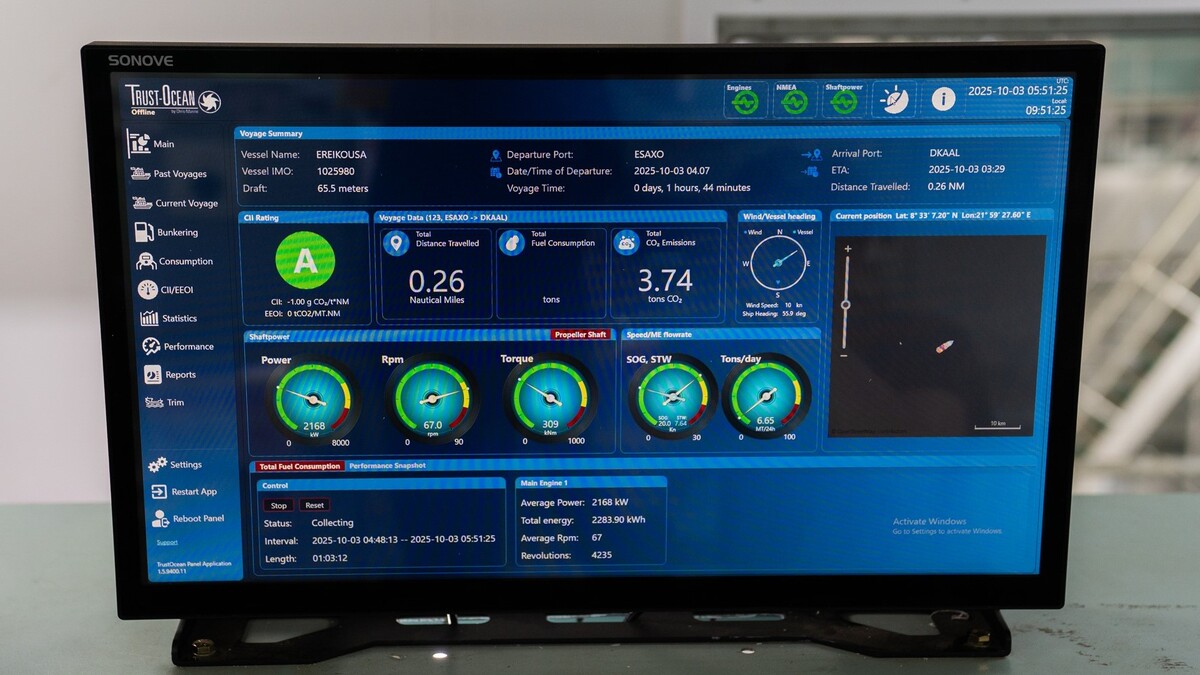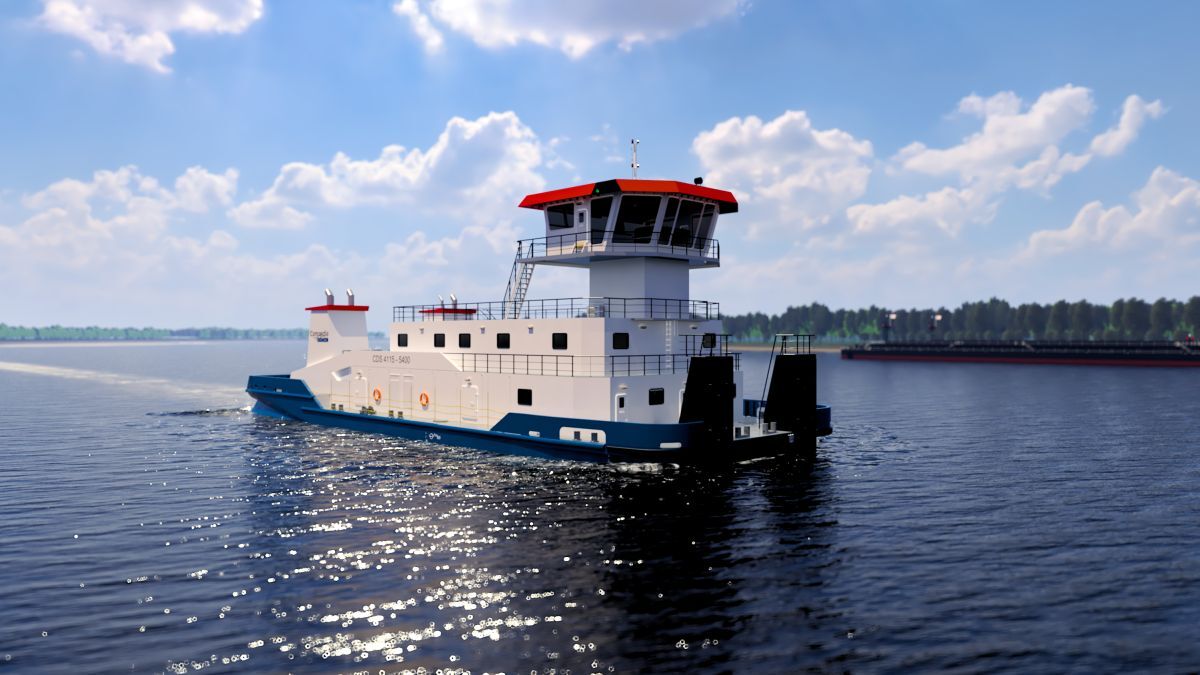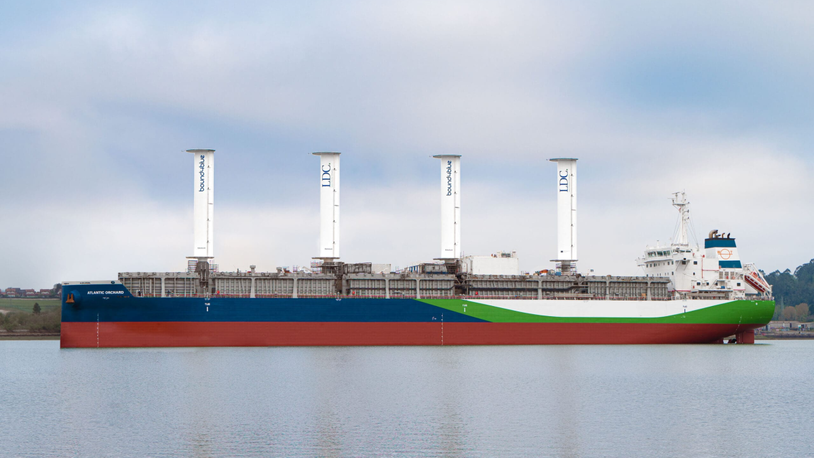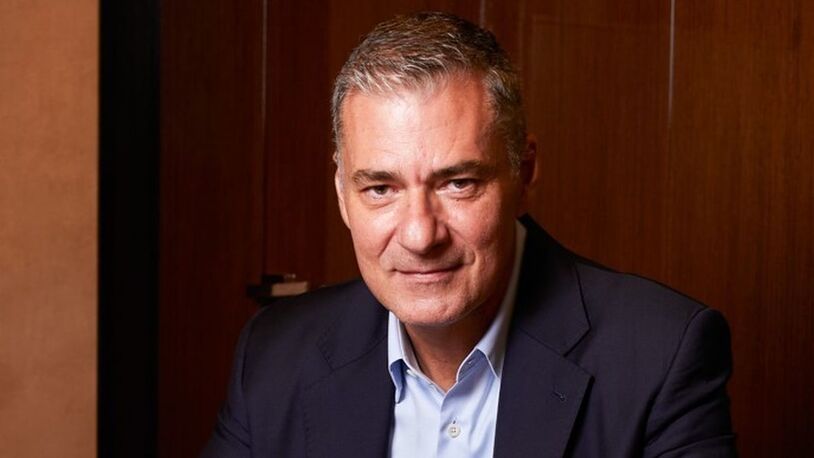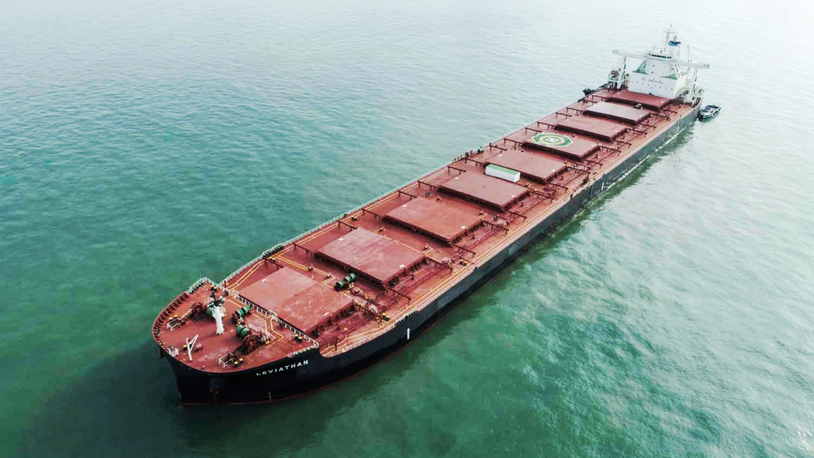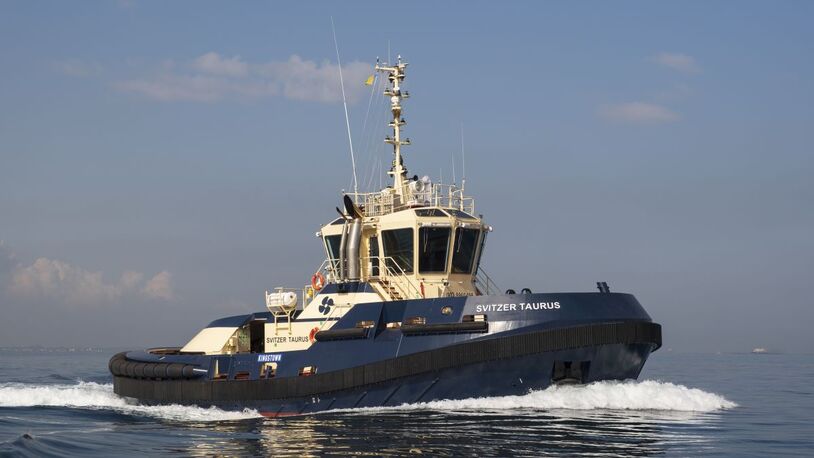Business Sectors
Events
Ship Recycling Webinar Week
Contents
Register to read more articles.
Demand in Americas drives tug and towboat deliveries
Newbuild pusher tugs and towboats have been delivered for inland waterways across the Americas
Inland marine transport is on an upward trend in the Americas with rising demand, fleet utilisation, revenues and operating profits, but safety is still an issue. In South America, demand has increased for transporting dry bulk, containers and liquid bulk on inland waterways and river estuaries, encouraging owners to introduce new tugboats and pusher vessels.
Hidrovias do Brasil introduced four pusher tugs in 2023, two of which have hybrid propulsion using onboard batteries and DC grids. HB Poraque and HB Enguia were built by Belov Engenharia Shipyard in Salvador, Brazil, to Robert Allan Ltd’s (RAL) RApide 2000-E pusher tug design for manoeuvring barges to docks in the Amazon estuary.
Uzmar Shipyard in Turkey delivered HB Mapara and HB Dourada to the Brazilian owner after their construction to RApide 4600-Z3 design with diesel-electric propulsion to push convoys of up to 35 barges along the Amazon River.
In Paraguay, Girona subsidiary Rio Sur Transporte y Logistica is expanding its pusher vessel fleet by ordering a shallow-draught CDS4115 design tug from Concordia Damen. This 41 m by 16 m vessel will have 4,030 kW of power to push a convey 281 m long with 12 barges along the 2,695-km Paraguay River.
Three Yanmar 6EY22AW engines installed will each generate 1,330 kW of power and its 2-m draft will allow it to access the shallow waters of the Paraguay and Parana rivers. Concordia will outfit the vessel at its shipyard in Werkendam, the Netherlands.
In the US, Kirby Corp, one of the largest owners of towboats and barges including articulated tug-barge (ATB) units, expects to spend between US$190M and US$240M in 2024 maintaining and improving its inland and coastal marine equipment. The bellwether of the US market reported significant year-on-year growth in revenues and earnings, strong demand and the limited availability of towboats and barges during 2023.
“In inland marine, we continued to experience strong demand and high barge utilisation in the low 90% range and spot market prices continue to push higher,” says Kirby president, and chief executive David Grzebinski.
“In our coastal marine business, we saw consistent customer demand during Q4 2023 that helped maintain barge utilisation in the low to mid 90%. Coastal marine revenues were up 4% sequentially as improved spot and term contract pricing more than offset planned maintenance and ballast water treatment installations, which reduced equipment availability.”
Kirby’s inland and coastal fleet utilisation has remained above 90% since 2021 from lows of around 68% for inland and 75% for coastal in Q4 2020, when demand slumped during the Covid 19 pandemic. Its marine transport operating margin for Q4 2023 was 15% compared with 11% for Q4 2022 and 10% in Q4 2020.
Mr Grzebinski expects marine transport markets in the US to further strengthen in 2024, driven by rising demand and limited newbuild construction. “In inland marine, our 2024 outlook anticipates positive market dynamics with steady customer demand and tight conditions,” he says.
“We expect our barge utilisation rates to be in the low to mid 90% range throughout the year. However, a potential recession along with a drop in demand could impact expected growth.” He expects similar utilisation for its coastal ATBs, barges and pusher tugs and plans to complete ballast water treatment installations in H1 2024.
Safety incidents
Rising fleet utilisation across the marine transport system in the US can result in safety issues. The US National Transportation Safety Board (NTSB) published its report in February 2024 into an accident in 2023 on the Mississippi River where two tows collided, spilling around 6,274 litres of ethanol and causing US$1.4M of damage.
Big D was towing 19 barges down the river and Carol McManus was towing 42 barges in the opposite direction when the tows collided at the bend near Fort Adams, Mississippi. Pilots navigating the tows agreed over VHF radio to a port-to-port passage, with Big D manoeuvring to the right descending bank. However, the Carol McManus pilot incorrectly recalled the arrangement, and also navigated his upbound tow toward the right descending bank.
The pilots, noticing the danger of colliding, attempted to manoeuvre to avoid this, but there was not enough time to do so before the tows collided.
“When one mariner proposes an arrangement to another, the other mariner should repeat back the proposed passing arrangement to ensure both parties have a shared understanding of the arrangement,” NSTB says in the report. “Repeating back a proposed arrangement is critical when there is a long period of time between when passing arrangements are made and when the vessels meet.”
Market consolidation
Corporate deals continue in the US inland market as major owners expand their fleets of tugboats and barges. In a recent deal, Centerline Logistics completed its acquisition of JMB Shipping and its fleet of Jones Act maritime assets, including liquid tank barges and tugboats.
JMB Capital Partners Lending, an investment firm “focused on special situations investments” sold JMB Shipping on 23 February 2024 for an undisclosed amount and terms.
Previously, Centerline leased and managed the JMB Shipping fleet, so this acquisition grants Centerline long-term ownership and operational control and enables it to integrate these vessels into its own expanding fleet, which has capacity to transport 3M barrels of liquids in tank barges.
“JMB Shipping’s assets are among the most unique and desirable in the coastal Jones Act market,” says Centerline Logistics chief executive Matt Godden. “Given the growing emphasis on domestic energy security, these assets have been, and will remain, crucial additions to Centerline’s fleet.”
In December 2023, Centerline completed a US$425M refinancing of its outstanding debt in a transaction led by Beal Bank, with other investors including long-term investor 3|5|2 Capital. This new credit facility will provide Centerline with enhanced financial flexibility and resources to continue pursuing its long-term strategic objectives, says Mr Godden.
Nashville-based Ingram Barge formed material handling and supply chain solutions subsidiary Ingram Infrastructure Group in February, after it acquired Inland River Transport Holdings from Seacor Holdings and NexStar Solutions in October 2023.
Fleet additions
Another large US owner, Maritime Partners, took delivery of Entech-designed towboat Jack Nash from C&C Marine and Repair, completing a 15-vessel series valued at US$75M.
This 25-m vessel has two Cummins QSK38-M1 main engines, each producing 1,940 kW, driving a fixed-pitch propeller from HS Marine Propulsion through Reintjes WAF 665 reduction gears. It has two Cummins QSB7-DM 99 kW generators and Fernstrum keel coolers. Maritime Partners named towboat Jennifer Lee in November 2023.
In December, Steiner Shipyard delivered 2,000-hp towboat Kirsty Dutsch to Florida Marine Transporters as the fifth of six vessels it is building for the Louisiana-based owner.
Campbell Transportation named Linda Hughes Farley inland towboat after its construction at Main Iron Works in Houma, Louisiana. Laborde Products supplied Mitsubishi engines for the first new towboat Steiner Construction has built for American Commercial Barge Line (ACBL) which was named Michael J. Kennelly in Q4 2023. Similar engines will be supplied to the shipyard for installation on a second 1,880-kW towboat for ACBL later in 2024.
Conrad Shipyard delivered 4,500-kW towboat Alice to Crounse Corp, the second newbuilding for the owner, following Sandra Holt, which was delivered in 2021.
The 27th International Tug & Salvage Convention, Exhibition & Awards will be held in association with Caterpillar in Dubai, UAE, 21-23 May 2024. Use this link for more details of this industry event and the associated social and networking opportunities; and this link to book your ticket for the exhibition, social gatherings and awards night.
Related to this Story
Events
Ship Recycling Webinar Week
International Bulk Shipping Conference 2025
Tankers 2030 Conference
Maritime Navigation Innovation Webinar Week
© 2024 Riviera Maritime Media Ltd.

